Product Details
Niko C2 light cranes are the ideal solution for lightweight lifting of load capacities up to 2000kg. They are supplied in a modular kit form, which enables them to be easily assembled, modified or moved to accommodate changes in your working patterns. The construction of Niko C2 light cranes is considerably lighter, free-running and more versatile than conventional I-beam overhead cranes.
Features
- Lift loads up to 2000kg
- Bridge span up to 12m
- Smooth and easy movement in all directions
- Manual or electronic lifting and travel
- Robust construction
- Wide range of fixing brackets
- Zinc plated, powder coated, hot dip galvanised finish
- Available in Stainless steel
- Modular design
Advantages
- Ultra-low headroom
- Crane bridge does not grab
- Low-maintenance and long working life
- Easy to install
- Fit directly to roof and a wide range of structures
- For indoor and outdoor applications
- Ideal for food applications and clean areas
- Easy to extend, modify or relocate
- Can connect to other cranes and conveyors
- Cost effective
Ceiling mounted light crane
Ceiling mounted light cranes are an ideal solution for applications where floor space is at a premium. The light crane can be suspended directly or dropped down from the existing ceiling or building support beams. The Niko C2 range has a wide variety of suspension brackets to enable the light crane to be suspended from virtually any roof structure. The major advantage of this type of system is that the floor space is kept clear of supporting stanchions, enabling free movement underneath the light crane.
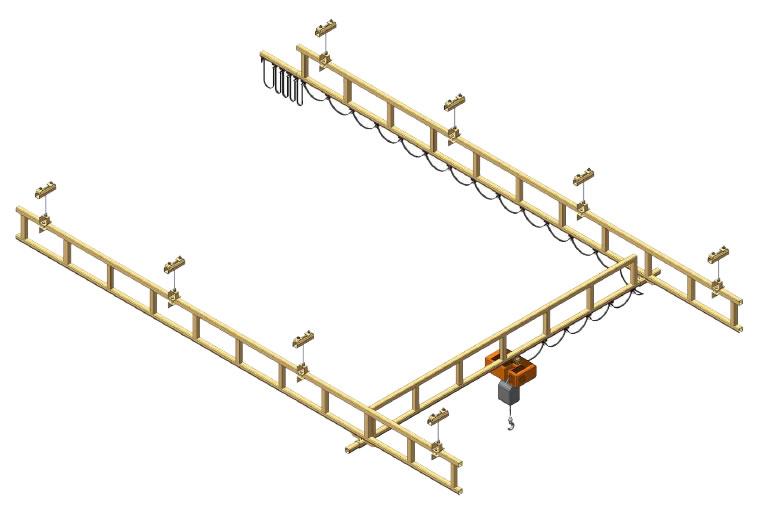
NOTE: The roof support points must be tested and approved by a structural engineer to ensure they can sustain the weight of the load and light crane.
Freestanding light cranes
Freestanding light cranes are generally used when the ceiling is not strong enough to support the weight of the crane and the load. The crane is supported from a freestanding steelwork support structure, which is designed and fabricated to suit the requirements of the working area. The support structure usually bolts directly to the floor, but can also be partially suspended from adjacent walls, stanchions or overhanging beams.
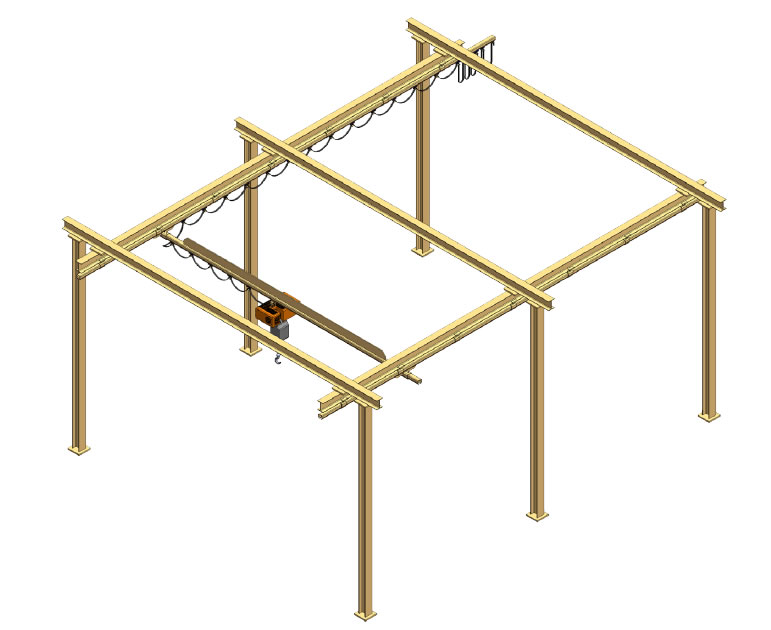
Climbing Cranes
The Climbing Crane system is unique to Niko Ltd
These systems were developed for the timber industry for lifting and handling large timber roof trusses. They are an ideal lifting solution for buildings with headroom space issues.
Climbing cranes are usually radio controlled for operator ease.
Chain Drive Climbing Crane
The climbing crane system is designed to clip directly to a sloping roof beam (up to 15-degree angle). It utilises standard Niko Ltd parts with a fixed chain drive designed specifically for this application.
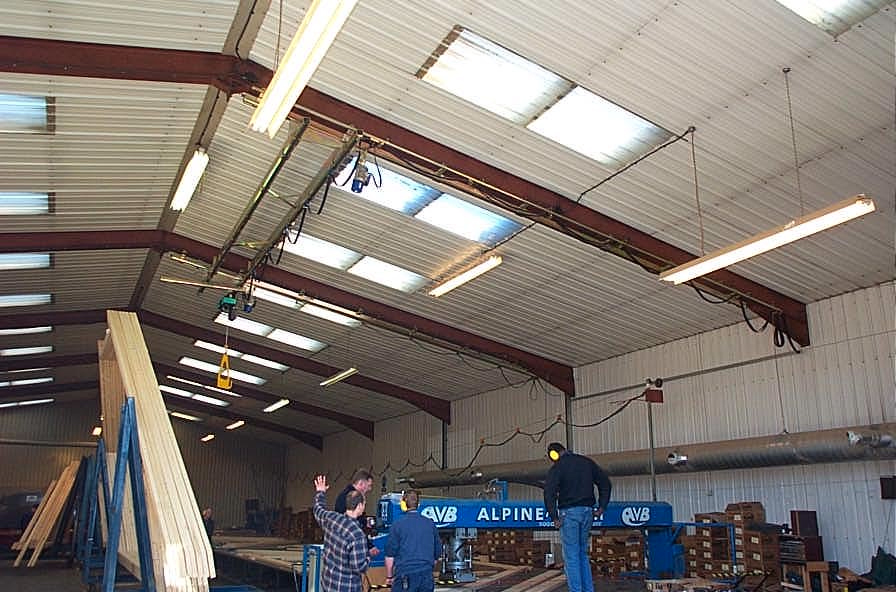
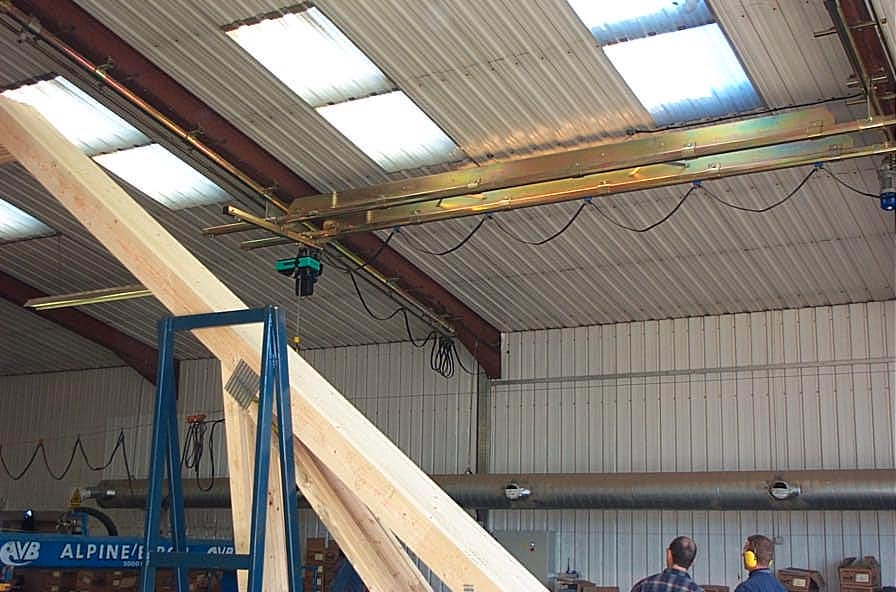
Hoist Lifted Climbing Crane
An alternative to the chain drive climbing crane is the hoist lifted version. In this system the climbing crane bridge is lifted and lowered by a pair of electric chain hoists working in unison.
Monorail Climbing Crane
The single track climbing crane monorail is raised and lowered by an electric chain hoist. It is ideal for straight-line low headroom lifting operations.
Layout Types
Light cranes usually comprise of 2 runway tracks running parallel with a bridge suspended below. The bridge enables a chain hoist or alternative lifting device to be suspended and travel from side to side along the bridge. The bridge can be travelled forwards and backwards along the runway tracks. This enables to operator to lift, move and lower a load anywhere within the working footprint below the light crane.
It is possible to have multiple light crane bridges suspended from the same runway tracks.
Single Girder Light Cranes
Single girder light cranes feature a single track bridge rail. This is the most common type of light crane system. The main advantage of single girder light cranes is that they offer the widest travel distance along the bridge and across the runway tracks.
Double Girder Light Cranes

Double girder light cranes feature a twin track bridge rail with the hoist suspended so that the weight of the load is carried evenly across both rails. The main advantage of double girder light cranes is that they offer a wider span between the runways than a single girder equivalent. It is also possible to add an intermediate runway beam and enable an even longer bridge length.
Low-headroom Light Cranes
Low-headroom light cranes feature a double girder bridge with a raised suspension section for mounting the hoist or alterative lifting device. The Niko product offers the lowest available headroom solution on the market. As a standard, the hoist is suspended within 100mm of the crane support point and in some instances even less. The main advantage of Low-headroom light cranes is that they provide a lifting solution in confined spaces where overhead lifting would not normally be possible.
Monorails
Monorails feature an independent track rail with a trolley that can be used to suspend a hoist or alterative lifting device. The hoist can then travel forward and back along the full length of the rail. Monorails consist of an assembly of straight track sections, curved track bends, junction switches and turn tables. The junction switches and turn table enable a change in direction, allowing the hoist trolley to follow different travel paths.
Light Crane Latching Systems
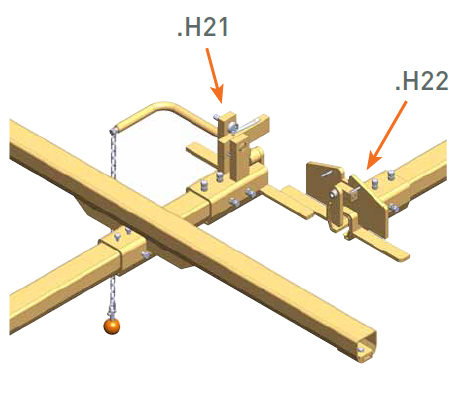
Latching systems interlock with the bridge of a light crane and enable the hoist trolley to be used on an adjacent monorail or another light crane system. It is possible to combine multiple latching devices within a single light crane system. The main advantage of latching systems is that they enable the use of the hoist or alternative lifting device outside of the normal working footprint of a light crane.
Sliding Cantilever Beams
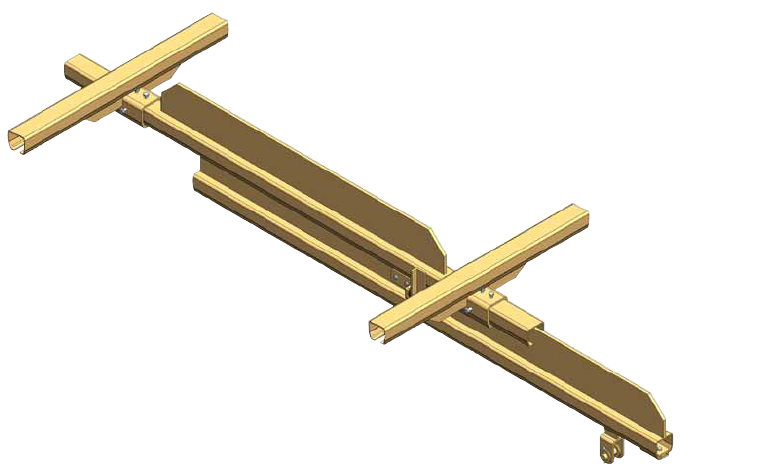
Sliding cantilever beams are used to enable lifting outside of the normal working footprint of a light crane or monorail system. They feature an underslung cantilever section suspended from a light crane bridge, monorail track or crane runway rails. The cantilever section can then travel past the confines of the suspending rail and enable lifting outside of the normal lifting footprint. This type of system is the ideal solution for lifting and moving a load in and out of containers; or for cranes that need to avoid obstacles within the working area.
Manual Light Crane for lifting timber roof trusses
Manual Light Crane for loading lengths of steel
Container Crane with cantilever for lifting and load positioning
Fully powered light crane with dual hoist operation
Niko Light Crane
Also Agents For
As well as the Niko Light Crane range, Niko Ltd are also agents/distributors for the following alternative products:
| Logo | Manufacturer | Product | Link |
 |
Erikkila | Pro-system | Coming soon |
 |
Ingersoll Rand | ZRA | Coming soon |
 |
Demag | KBK | Coming soon |
 |
Verlinde | Eurosystem | Coming soon |
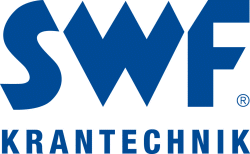 |
SWF | ProfileMaster | Coming soon |
 |
Donati | DSC | Coming soon |
- Light Cranes
- Light Overhead Cranes
- Lightweight Cranes
- Lightweight Overhead Cranes
- Manual Cranes
- Manual Overhead Cranes
- Ceiling Mounted Light Cranes
- Roof Mounted Light Cranes
- Freestanding Light Cranes
- Floor Mounted Light Cranes
- Workstation Cranes
- Workstation Manual Cranes
- Workshop Cranes
- Workshop Manual Cranes
- Crane Kit
- Manual Crane Kit
- Freestanding Crane Kit
- Ceiling Mounted Crane Kit
- H Cranes
- XY Cranes
- X-Y Cranes
- Push Pull Cranes
- Enclosed Track Cranes
- Profile Track Cranes
- Track and Trolley Cranes
- Low-headroom Cranes
- Niko Cranes
- Monorail Cranes
- Sliding Cantilever Beam Cranes
- Rolling Beam Cranes

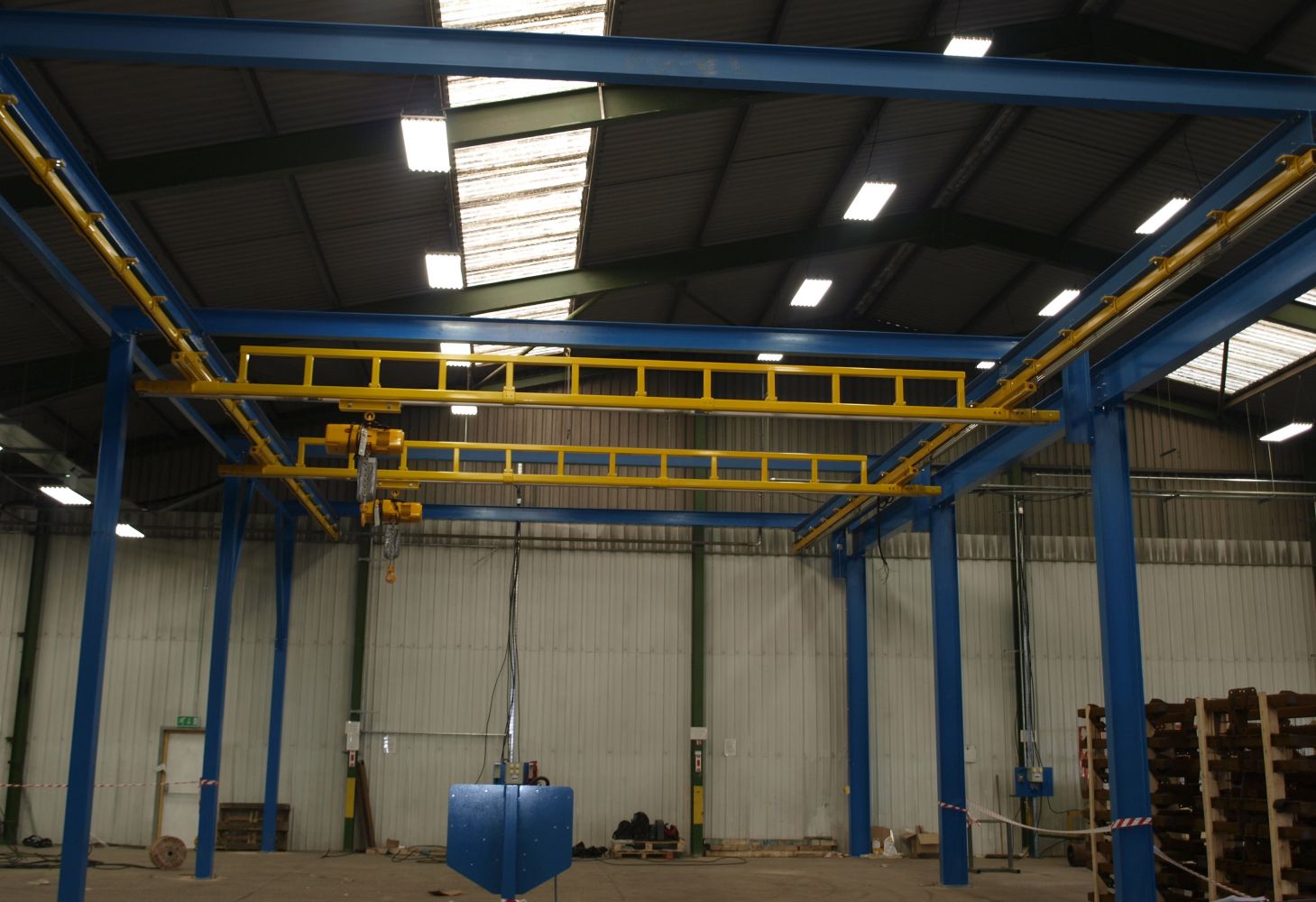
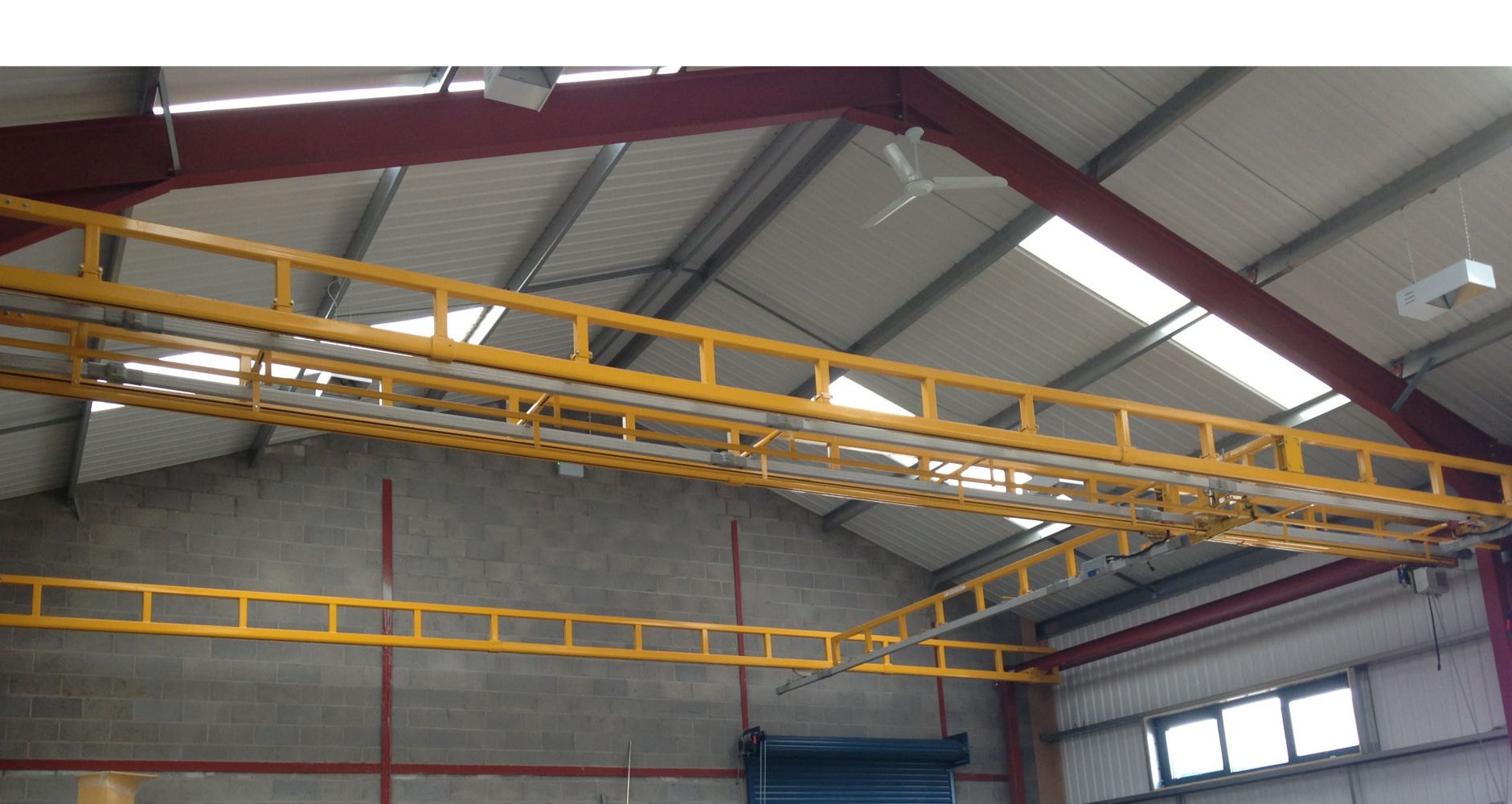

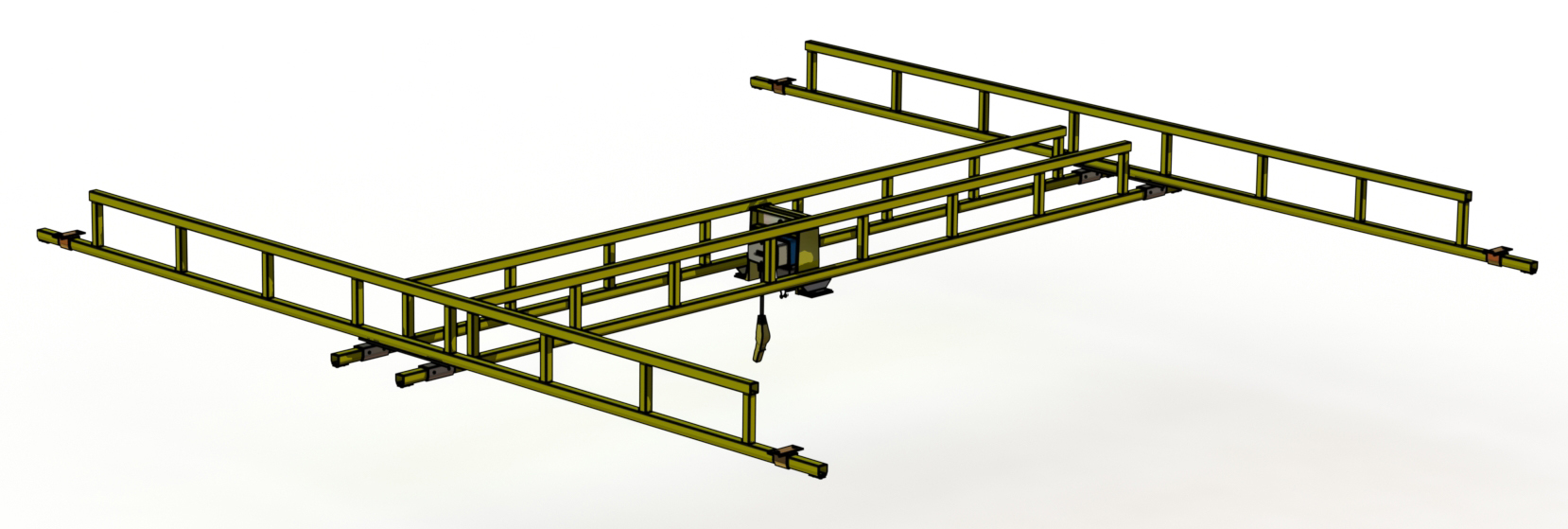
 Downloads
Downloads Case Studies
Case Studies Also Known As
Also Known As Enquire About This Product
Enquire About This Product